LONDON, PARIS, NEW YORK...
STYLE & DISTINCTION
Written by Nishit Atulkumar Soni
"Every city has a sex and an age which have nothing to do with demography. Rome is feminine. So is Odessa. London is a teenager, an urchin, and in this hasn't changed since the time of Dickens. Paris, I believe, is a man in his twenties in love with an older woman."
John Berger
The Savoir-Faire of Paris.
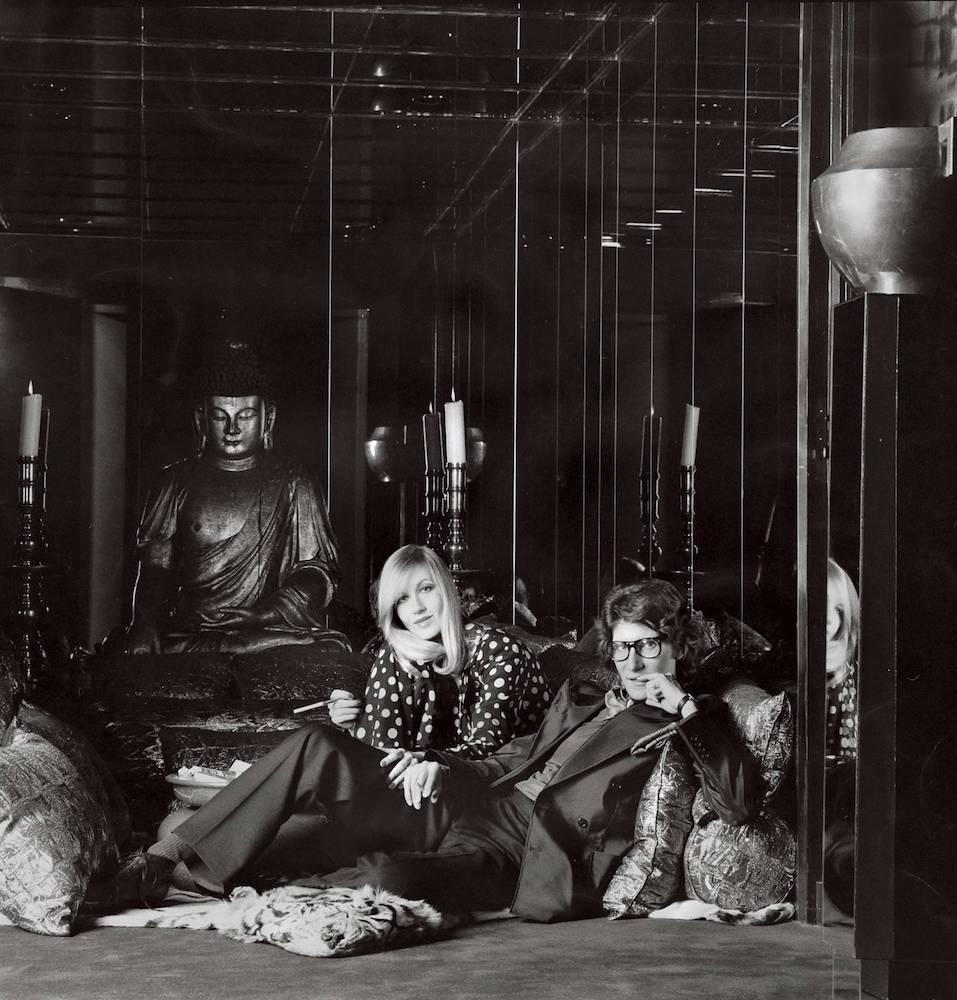
Yves Saint Laurent and Betty Catroux, presenting us Parisian flair. Photographed by Henry Clarke.
Our story begins amidst the historical arrondissements of Paris, where the très chic connoisseurs of fashion are immersed in the embrace of Parisian tailoring. The silhouette of the garment is made with a slimmer and more tapered finesse, paying homage to the city's innate sense of flair. As the jacket falls lightly, one can't help but notice the thoughtful choice of high-quality fabrics. The preference for high-end fabrics is evident, while the disdain for blended textiles is a silent rejection, drawing a subtle contrast to the varied tastes of the fabric choices of the tailoring enthusiast across the Atlantic. Imagine - a classic Parisian lapel (namely fish mouth), narrow and well rolled, a testament to the Gallic commitment to refined aesthetics.
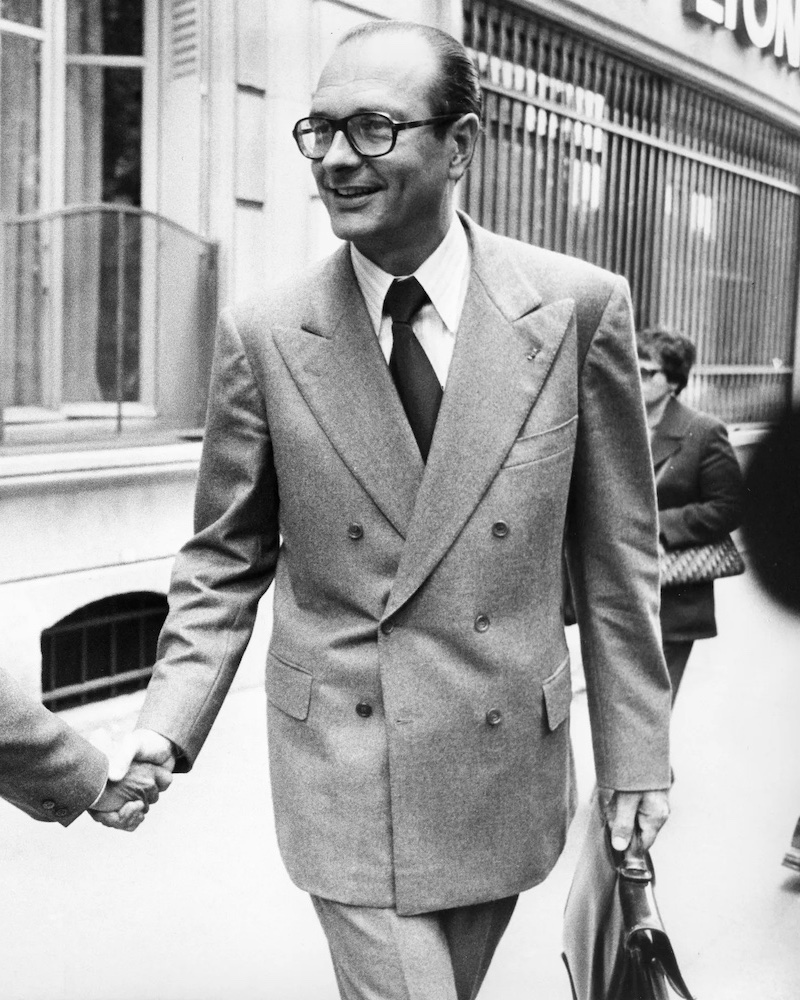
Former French president Jacques Chirac looking dashing in a wide peak lapel but slim suit.
In the domain of Parisian men's fashion and tailoring, some argue that a majority of French men embody a laissez-faire elegance—a uniquely casual approach that defies conventional definitions. It's a completely unscripted style, allowing for creative interpretation. Simultaneously, it's essential to acknowledge that, like any other group, there's a spectrum. The reality is that not every French man is a fashion maven; in fact, a significant number may lack the same innate sense of dressing, challenging stereotypes and illustrating the delicate balance between myth and reality. The last time France made an impact on the world of men's tailoring was perhaps in the 18th century. Since then, it has been predominantly the United Kingdom and Italy, with a modest contribution from the United States setting the standards worldwide. When delving into the tailoring scene in Paris, a love for flair among both tailors and designers seems to stand out. A preference for slim and skinny silhouettes often characterises the distinction of a French suit. However, the slim and flair example is just one of many. What may be perceived as unconventional and plain-looking by some can be a unique stroke of artistry to others. It's a dynamic interplay between the classic and the contemporary.
Key particularities of a French suit
Silhouette : French suits typically feature a slimmer and more streamlined silhouette compared to some other styles. This contemporary cut not only enhances a sleek and fashionable appearance but also imparts an haute couture touch to the overall silhouette of the French suit.
Shoulders : When discussing shoulders, the traditional parisian tailors still incorporate their Maison’s savoir - faire into the shoulders of a suit. Among the unique features found in French jackets, one finds concave shoulders (seemingly artistic) that occasionally evolve into pagoda shoulders. Even the iconic Karl Lagerfeld once remarked about Pagoda shoulders, expressing, “I could recognise a Cifonelli shoulder from a distance of a hundred metres,”
Lapels : Lapels on French suits tend to be of, often moderate, or sometimes narrower in width, adding a (debatable) touch of modernity. Though, each parisian tailoring house maintains their own distinctive and signature style when it comes to crafting lapels.
Vents : The vents, be it single or double, are often seen offering a generous flair to the slim and sleek waist of the suit. This design choice contributes to the clean lines of the suit and emphasises a modern, fitted appearance.
Monochromatic Color Palette : French tailoring often favours a monochromatic color palette, with classic hues like navy, gray, and black. This color choice adds to the sophistication and versatility of the suit.
What sets them apart : Parisian tailors express a reserved affection for crafting Milanese buttonholes (a delicate artistry of handwoven silk threads with a small placement beneath the lapel) on the suits. This detail (with its origins rooted in Italian tailoring) is a sublime hallmark found exclusively in handcrafted suits.
TAILORS IN PARIS
Traditional Shirtmakers - Charvet
Traditional Tailors - Cifonelli, Camps De Luca, Maison Pen
Fashion Tailoring - Husbands
CountrySide Tailoring/Brands - Mettez
Tailored Trousers - Scavini, Aspen
For Vintage Tailoring - Chez Ammar, Chato Lufsen For Vintage Arny’s Clothing
London's Legacy
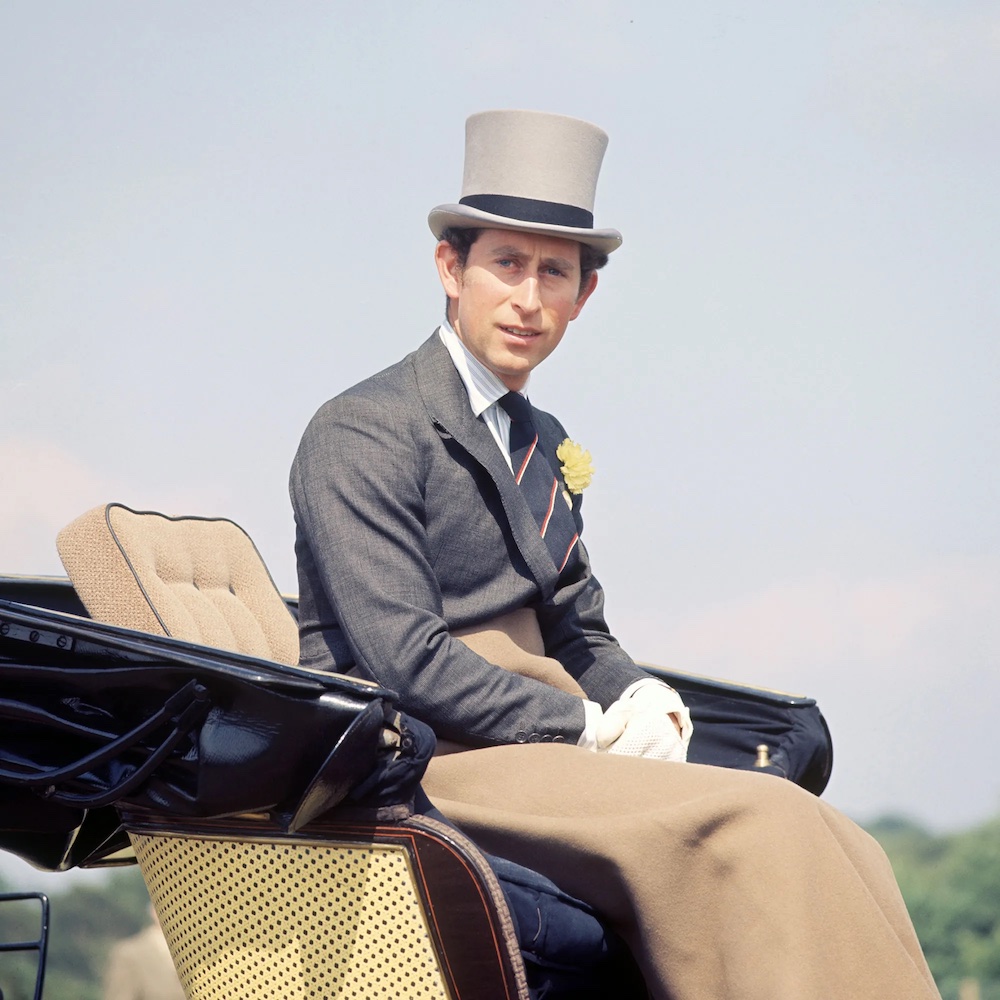
King Charles having a ride and some fresh air in 1976. Photography by Reginald Davis.
The venerable city of London, arguably the home of British tailoring, proven to have withstood the test of time. Drawing significant inspiration from military, equestrian attire, and hunting influences, British tailoring transitioned through various periods, embracing both the regality of the royals and the rebellious spirit of punks. On one side, esteemed tailors like Anderson & Sheppard, Gieves & Hawkes and others, crafted timeless classics for Prince Charles & the Royal Family, earning acclaim for their impeccable style. Meanwhile, the innovators like Tommy Nutter and Edward Sexton carved their own path with distinct features like elongated, waisted, and flared designs. That era witnessed narrow yet square rope shoulders and exceptionally wide lapels, marking a shift toward fashion tailoring while preserving the art of the craft and then shifting back again to the classics. Ironically, If we were to sum up British Tailoring today in one word, it would be structured.
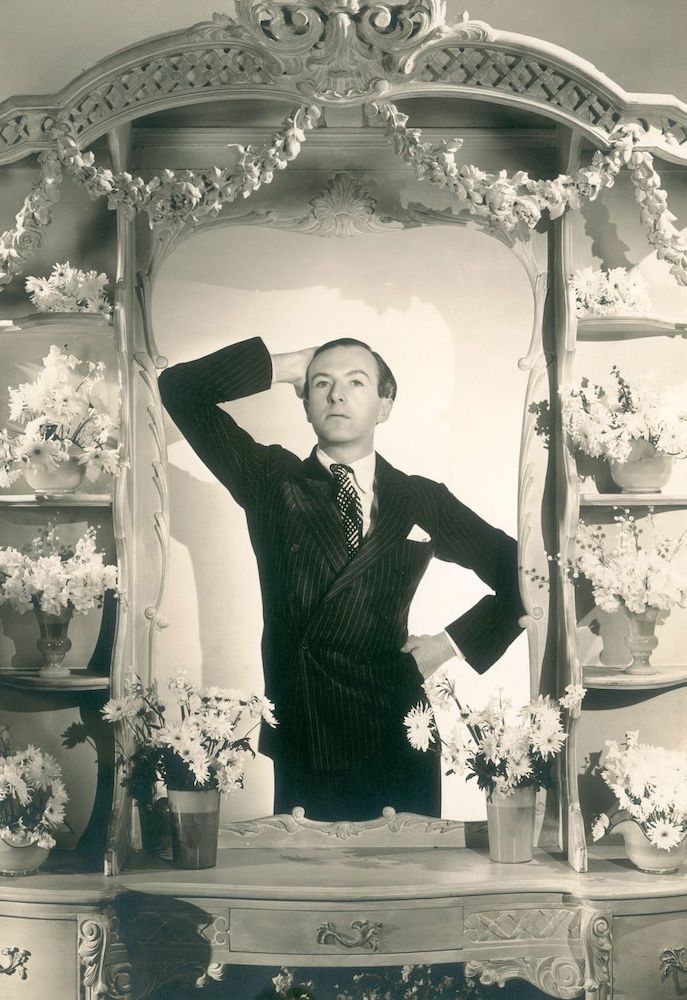
Sir Cecil Beaton, chic as always, playing with vanity. Photography by Cecil himself.
Within the confines of London, Savile Row remains the cathedral of sartorial worship. Its cobblestone pathways are a runway of dreams, where the clinking of shears conducts a symphony of heritage. The master tailors imbue garments with a sacred aura—a communion between fabric and flesh. In this corner of London, tradition reigns supreme, and the art of tailoring is passed down from generation to generation. The history and prestige of Savile Row are unmatched, with a list of clientele that includes royalty, celebrities, and business tycoons. It's no wonder that Savile Row has remained the pinnacle of men's fashion for over 200 years. For those who appreciate the art of tailoring, there is no better place to experience it than on this iconic street in London.
Key particularities of an English suit
Silhouette : The jacket—a fortress of elegance, No need to imagine broad shoulders; they're there, standing tall, a natural silhouette that echoes the heritage of Savile Row.
Structured Jacket : The jacket structure is firm, offering a well-defined shape. This gives a sense of formality and elegance, creating a polished appearance.
Shoulders : At Savile Row, a pronounced preference for structured shoulders prevails, drawing inspiration from the disciplined lines and formality inherent in military uniforms. This influence is rooted in the fact that many tailors at Savile Row, once came from a military background.
Lapels : Lapels, preferably peak, are the heralds of distinction on Savile Row. Wide and assertive, they announce the wearer's arrival with a British accent.
Vents : Vents, often overlooked for their functionality, are but practical companions of garments. Preferably, a Savile Row suit would feature double vents (also known as the British Cut with a fascinating historical context) offering a subtle flair to the jacket from the waist, setting it apart from the approach of French Tailoring.
Trousers : Concerning trousers, pleats tend to be the focal point, creating a display of creases that exudes a sense of British refinement.
What sets them apart : In British tailoring, a traditional technique, an almost-lost art which is only practiced by a few now, is called “British Drape.” When executed with finesse, British Drape offers a distinctive and individualised approach to the silhouette of the jacket. In this method, suits are cut with an additional inch or so of fabric in the chest and across the shoulder blades. The unique feature of this technique is that the extra material naturally "drapes" from the shoulder, in contrast to being stitched to a layer of padding.
TAILORS IN LONDON
Traditional Shirtmakers : Turnbull & Asser, Budd shirts
Traditional Tailoring : Richard Anderson, Chittleborough & Morgan, Anderson & Sheppard, Edward Sexton
Historical Tailoring : Henry Poole, Gieves & Hawkes, Huntsman.
Fashion/Contemporary Tailoring/Brands: Drake’s, New & Lingwood, Trunk Clothiers
New York Narrative
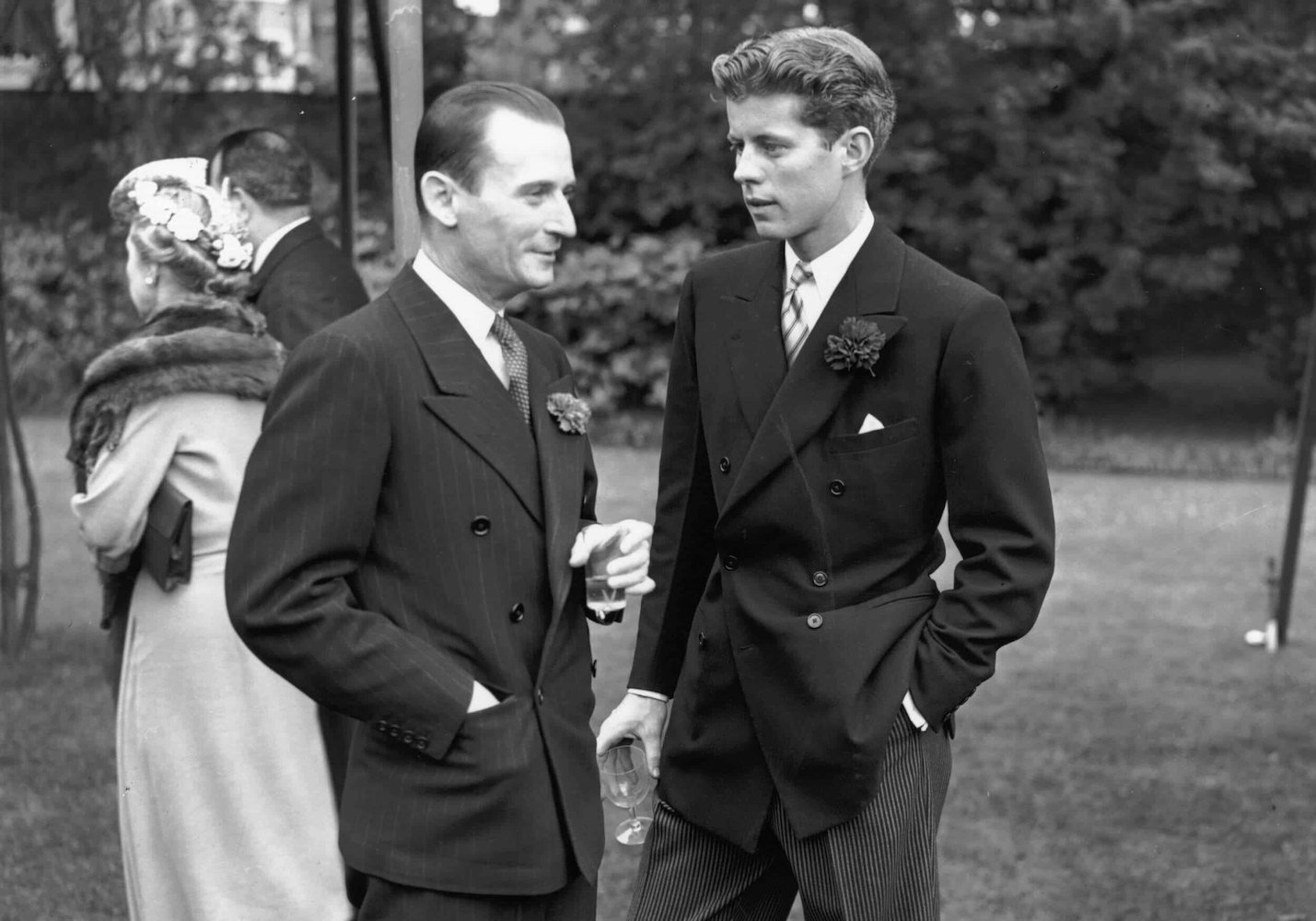
John F. Kennedy in his 30's, wearing a suit that is probably from Brooks Brothers.
On the other side of the Atlantic, New York, a vibrant cityscape, where we abandon the sepia tones of tradition for the hues of a New York minute. American jackets boast a laid-back vibe, offering both comfort and casual flair, the style, which was subsequently initiated and made famous by Brooks Brothers. This is not a city constrained by the rigidity of tradition; it is a bustling metropolis that embraces the audacity of personal style. In this New York tale, the Ivy League clothing carries a nostalgic motif, crafting a storyline that lingers like the scent of burnt cigarette butts… infusing the air with notes of the American Dream.
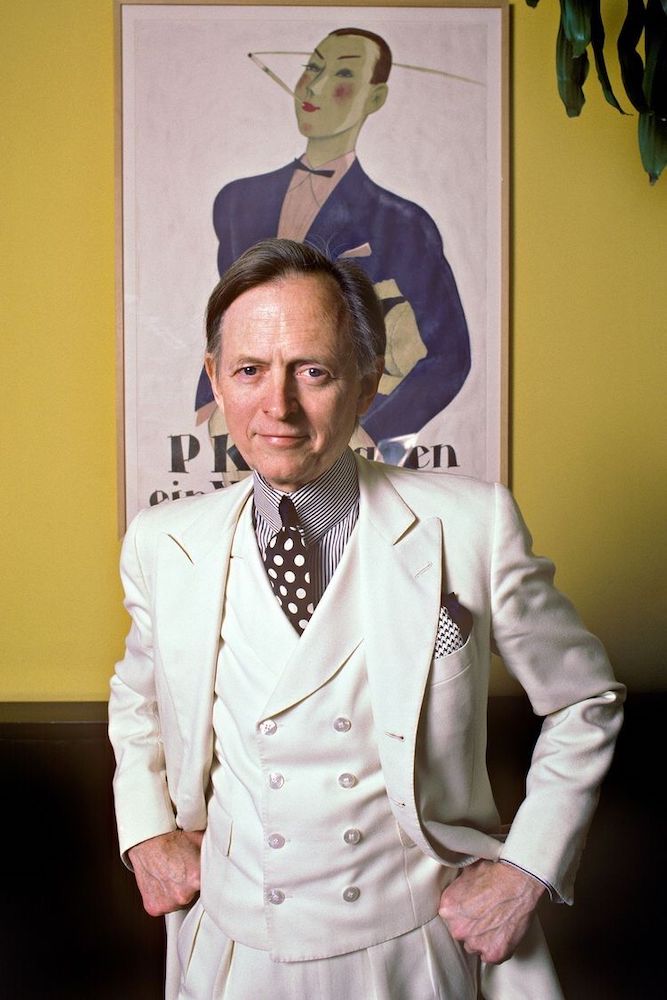
Tom Wolfe, seen here in 1988, in his popularized ivory suit with elements of blue & white - channeling the spirit of a Southern gentleman.
In a place where sartorial history was never etched into the native soil, the ghosts of retired or departed Italian and British tailors remain, adding to the allure of the melting pot of American creativity. Amidst the skyscrapers and the sirens, the connoisseurs of tailoring discern the subtle melange between tradition and avant-garde audacity, signaling the local ambiance. People here are not afraid to take risks with their fashion choices, and this fearlessness is what makes the style scene so dynamic and unique. Whether you're walking down the well-heeled, tree-lined streets of the Upper East Side or people-watching in Soho, you're sure to be inspired by the myriad of colors and fabrics. Whether you're a born-and-bred New Yorker or just passing through, New York’s style scene is sure to leave a mark on you.
Key particularities of an American suit
Silhouette : This jacket strikes the perfect balance between comfort and style, American tailoring is often characterized by a broader silhouette. Jackets in this style typically boast a straighter cut, complemented by a natural shoulder line. It's a nod to the slim and streamlined figure of a youthful teenager.
Versatility : American suits are known for their versatility, suitable for various occasions, from business to more casual events. This adaptability makes them popular in different settings.
Lapels : In American tailoring, where there is no strict preference for either notch or peak lapels, versatility reigns, adapting to current trends and individual tastes. Here, button-down collars flirt with tailored suits, providing a more discreet elegance.
Shoulders : American suits typically feature natural unpadded shoulders, providing a more relaxed and comfortable fit compared to suits with more structured shoulders.
Vents : Most American suits commonly feature a single center vent at the back. This design, influenced by the ready-to-wear and sack suit era, is not only practical for ease of movement but also aligns seamlessly with a more relaxed style.
Trousers : In a distant era, American tailoring once favoured pleated trousers, but in recent times, the preference has shifted to no pleats. This shift mirrors the contemporary influence of Ivy League aesthetics in American tailoring.
Patch Pockets : In a more casual iteration, American suits may include patch pockets, adding a relaxed and functional touch to the jacket. This feature contributes to the overall versatility of the suit.
TAILORS IN NEW YORK
Tailoring : Leonard Logsdail, Cad & the Dandy, Ignacio's, Bhambi's custom tailors, Greenfield clothiers, J. Mueser, Manolo Costa
Fashion/Contemporary Tailoring : F.E. Castelberry, Alan Flusser custom, Aime Leon Dore, Stoffa Clothing, Rowing Blazers, The Row, Brooklyn Tailors, Saturdays NYC
Brands : Brooks Brothers, Paul Stuart, Ralph Lauren
Multi-brand shops : The Armoury
Vintage Stores : Stock Vintage, Crowley Vintage, Raggedy Threads
Sky Blue
Est. 2019